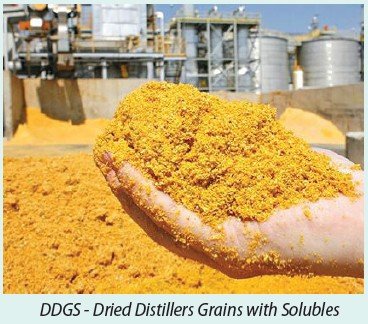Why is Cow Performance Elevated when fed DDGS?
/DDG (Dry Distiller Grains) or DDGS (Dry Distillers Grains and Solubles) has rapidly become a mainstay component in many in-shed feed blends. Cows love it and so do the farmers using it – the lift in milk response is very consistent. So why is this??
DDG is a by-product, produced from the production of ethanol out of primarily maize grains. On the face of it, it has a good ME (13MJME/kgDM), fat at 9% and a high crude protein percentage of 28%.
Undoubtedly there is an advantage in using a blend that is highly palatable and DDG certainly ticks this box. Shy or picky eaters in the shed disappear making consistent intakes of concentrates assured.
The real magic from DDG though is not in the fact that it is high in crude protein per se but in its ratio of Rumen Degradable Protein (RDP) to Rumen Undegradable Protein (RUP). The heat treatment involved in the production of DDG means that a high proportion of its crude protein (~60-70%) is in the RUP form. Compare this with spring perennial grass that is around 10-25% (and white clover lower again).
RDP is the protein that is used by rumen bugs for themselves to grow in the presence of carbohydrate. This creates microbial protein that the cows then digest further down the gut. RDP that is surplus to microbial requirements results in urea production in the rumen, with excesses disposed of in the urine (and increased MUN values).
High production cows need an increasing amount of RUP in the diet to support lactation. In TMR rations built for high producing cows the aim is to have a crude protein ratio of 65% RDP and 35% RUP. An RUP surplus is not as readily lost to the formation of urea, meaning that it has little influence on Milk Urea Nitrogen levels (MUN). RUP provides essential amino acids that may be low in microbial proteins which can be production limiting.
Heat treated Soy Meal, late stage (flowering) cut Lucerne and Red Clover are all high in RUP (particularly when conserved in a higher dry matter form – baleage or hay). Also keep in mind that with increasing production there is an increase in calcium requirements by the cow. DDG, Barley, Wheat and PKE are all very low in Ca.




